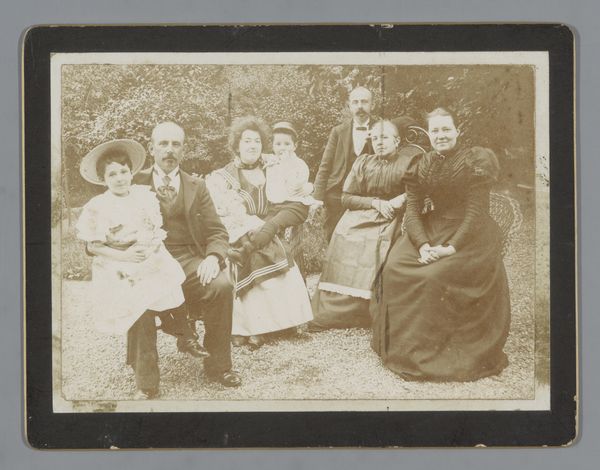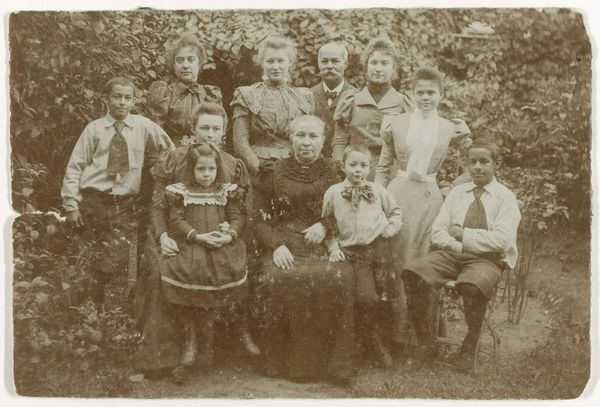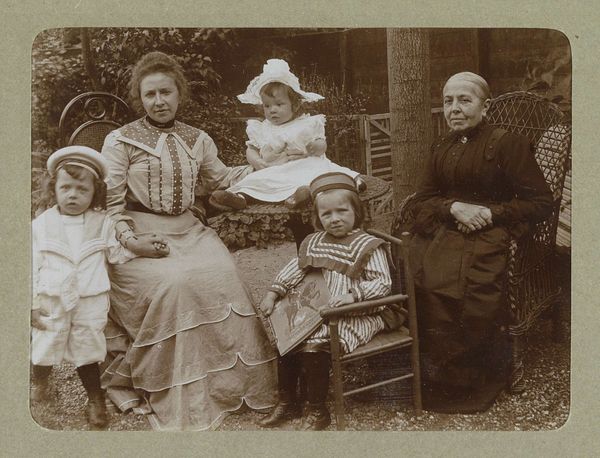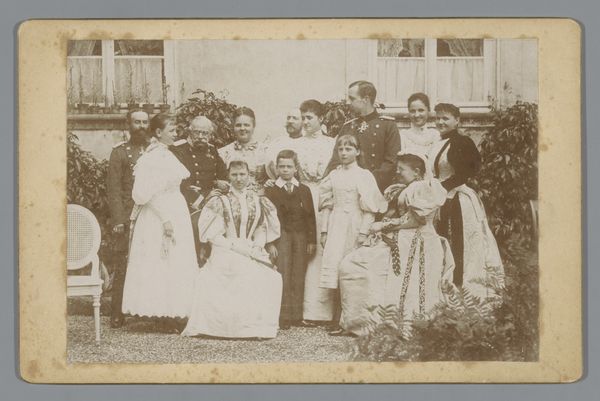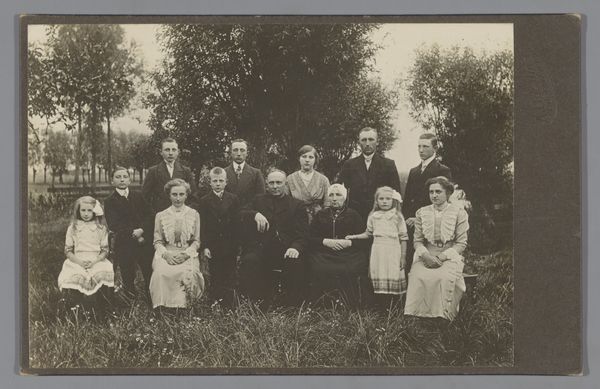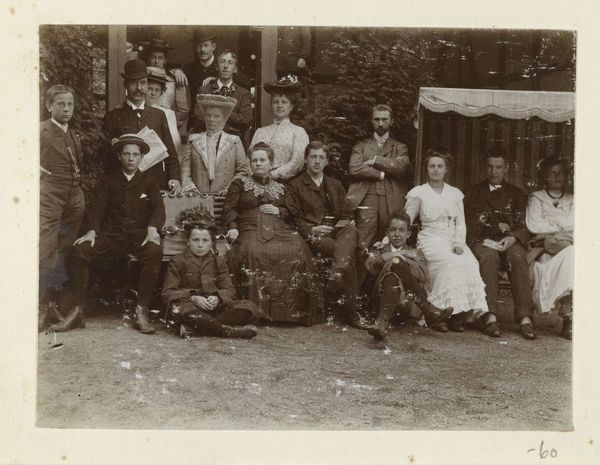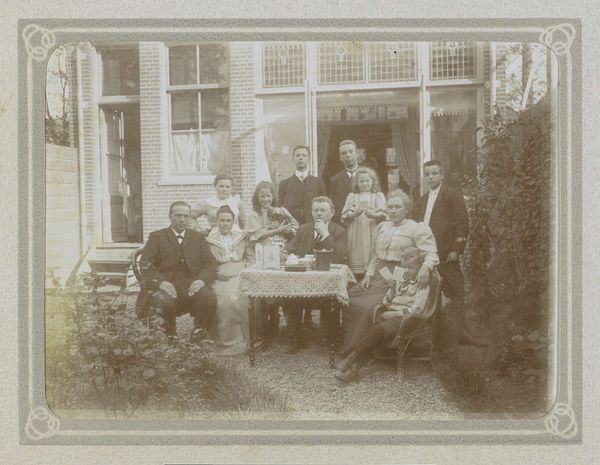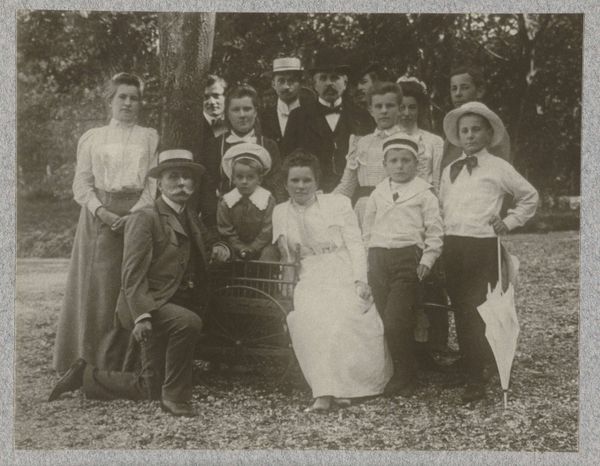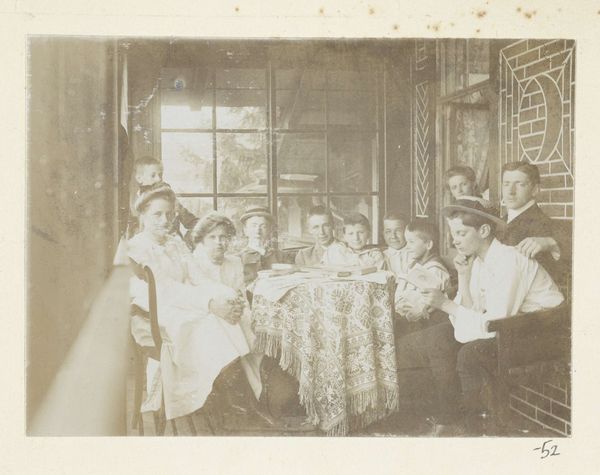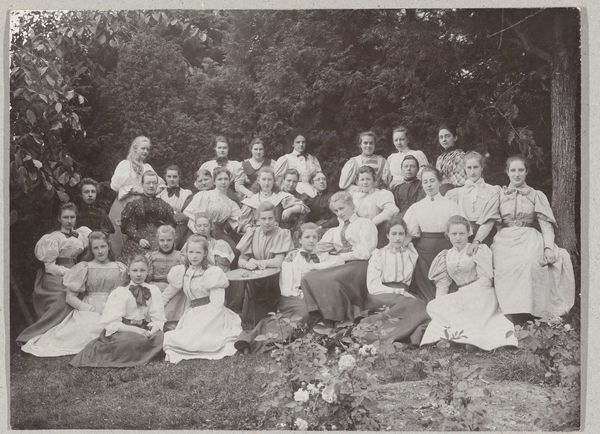
Groepsportret van de familie Hoogendijk in een tuin c. 1898 - 1902
0:00
0:00
willemcarelvanderkop
Rijksmuseum
photography
#
portrait
#
pictorialism
#
photography
#
group-portraits
#
19th century
#
genre-painting
Dimensions: height 78 mm, width 107 mm
Copyright: Rijks Museum: Open Domain
Curator: Looking at "Groepsportret van de familie Hoogendijk in een tuin," a photograph taken between 1898 and 1902, currently held at the Rijksmuseum, I’m struck by the family patriarch in what appears to be a military uniform, a detail that feels both authoritative and staged. Editor: My immediate feeling is of a carefully constructed hierarchy, both in the composition and in the subtle expressions. There’s a formality to the posing that feels very of its time, but almost oppressive. It makes me wonder about the unwritten rules dictating their lives. Curator: It's intriguing how photography, still relatively novel at this time, was quickly adopted to visually codify societal structures. Van der Kop employs Pictorialism, a style attempting to elevate photography to high art. The soft focus and careful arrangement are consciously artistic. Editor: Absolutely. Pictorialism aimed to imbue photography with the aesthetics of painting, attempting to justify its place among traditional art forms. But in doing so, it can sometimes mask the reality, presenting an idealized version of family and status. It speaks volumes about how elites wish to be perceived and remembered. What narrative do you glean from the expressions on their faces? Curator: The solemnity, bordering on melancholic, does suggest deeper psychological currents. The women's posture conveys submission while the men possess a stiff reserve; all perhaps conforming to roles rather than revealing authentic emotion. Editor: It's this quiet conformity, the stiff upper lip mentality perpetuated in part by visual cues, which makes me uneasy. Group portraits like these cemented societal expectations, especially about family roles. Notice how each member's clothing signifies status and the unspoken pecking order. Do you perceive this as a mirror reflecting cultural values, or a directive designed to preserve norms? Curator: Perhaps it functioned dually. Photography, even when seemingly objective, can still imprint an ideological stance, reinforcing specific cultural narratives and maintaining their resonance. Editor: The somber tones of the sepia image further amplifies its message—a carefully curated presentation of an elite Dutch family, hinting at stories beneath its static facade, inviting questions about agency, expectations, and self-representation. I'm glad we considered this group dynamic today. Curator: Indeed, revisiting images such as this one serves as a poignant window into the complex choreography of history.
Comments
No comments
Be the first to comment and join the conversation on the ultimate creative platform.
